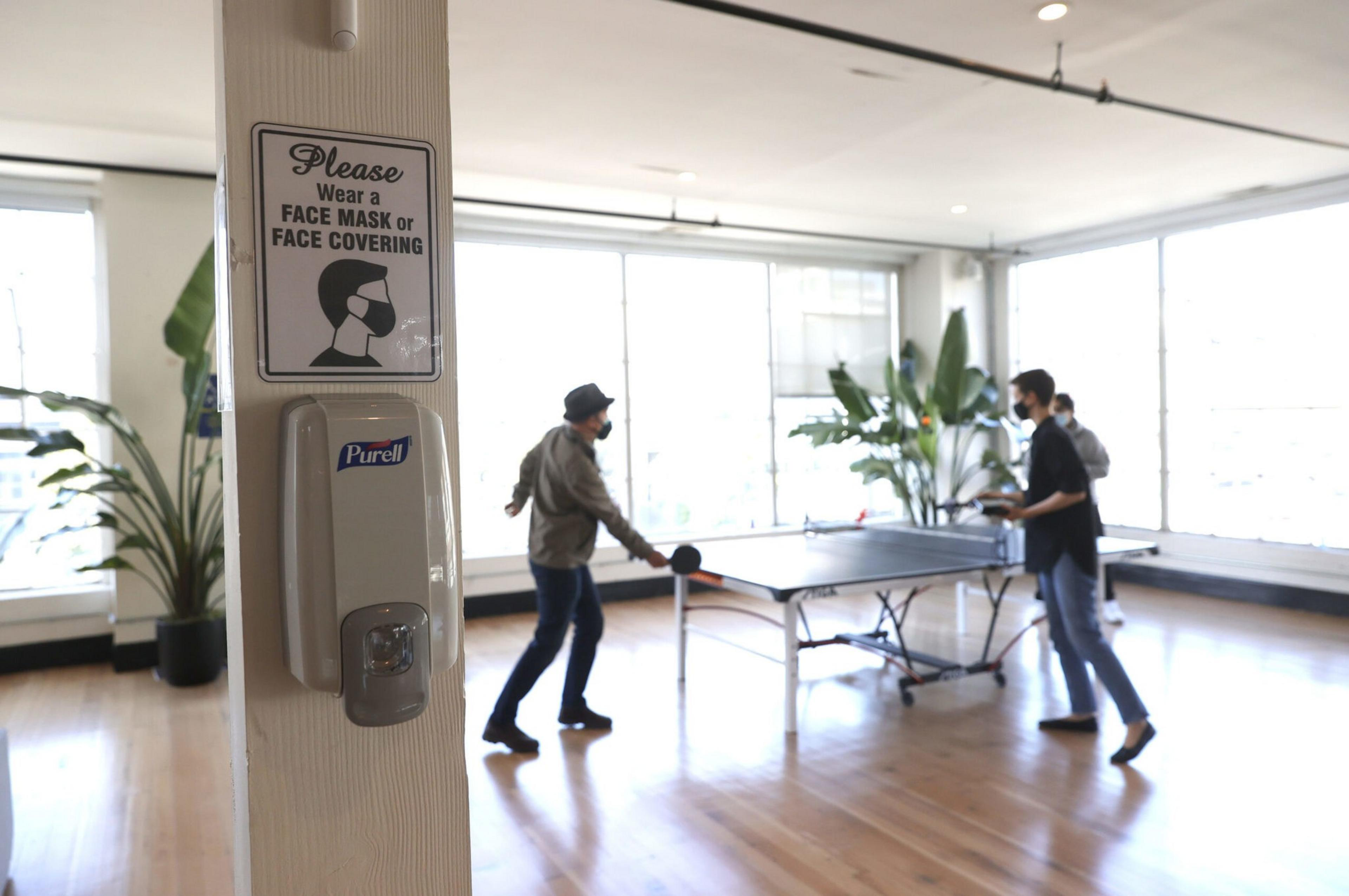A new pandemic wave is further complicating an already slow return to offices for San Francisco workers, but poll data shows little appetite for a full return to in-person work anyway.
According to data from the key card entry firm Kastle Systems, an average of 33.4% of office workers in the San Francisco metro area were working from the office last week, a decline from the 35.4% pandemic-era high seen in April. The city lags behind other U.S. metro areas in the percentage of workers who have returned to offices.
That tracked with the SF Standard’s poll, which showed a minority of respondents saying they always worked in person. What’s more, poll data indicates that many of them hope to never work full time in person again.

Prior to the pandemic, nearly 3 in 4 San Francisco workers (73%) always worked in person, according to The Standard’s poll. Now the number is less than half that: A mere 34% of respondents said they are always in person, compared to 40% who said they are working a hybrid schedule, while 22% said they are always remote.
So what could the “new normal” for office workers look like in a post-pandemic world?
Employers are telling workers to plan on working 2.3 days from home, on average. That’s according to the Survey of Working Arrangements and Attitudes (opens in new tab) (SWAA), a monthly gauge of work-from-home attitudes from economists at Instituto Tecnológico Autónomo de México, Stanford University and the University of Chicago. That number has steadily increased as the pandemic dragged on, rising from about 1.6 days back in January 2021.
Employee preferences likely play a role in many companies’ return to work plans: Tech workers, for instance, showed overwhelmingly negative opinions about working in person full time. Only 9% of those surveyed said they prefer to be only in person, with 65% seeking a hybrid structure and 28% desiring a fully remote schedule.
More broadly, local sentiments about post-pandemic work plans strongly imply a desire for a flexible hybrid schedule. According to the SF Standard survey, 27% of working voters said they want to be always in person. That compares to 61% who said they prefer a mix of in-person and remote work, and only 15% who are looking for a totally remote structure.
Male respondents had more of a preference for in-person work, with 32% saying they want to always work in person in the future, compared just to 22% of women. The split was even stronger among women of color, with only 18% saying they wanted a fully in-office schedule.
Unsurprisingly, opinions are also split among generational lines. For respondents 18 to 34, 18% said they would prefer to always work in person, whereas for those over 65 that number was 40%. Across all age ranges, however, a mix of in-person and remote work had the most support.
Political affiliation also correlated with people’s preferred work patterns. A majority of Democrats (65%) preferred to have a hybrid schedule, while a majority of Republicans (54%) said they preferred to work from the office.
A preference for remote work also tended to coincide with higher income. The more a survey respondent earned, the higher the likelihood they preferred a hybrid working environment in the future, and the lower the likelihood they preferred to work totally in person.
The split was more even among San Francisco workers that identified themselves as either a member of a labor union or a city employee: 44% and 45%, respectively, said they wanted to work fully in person in the future.
